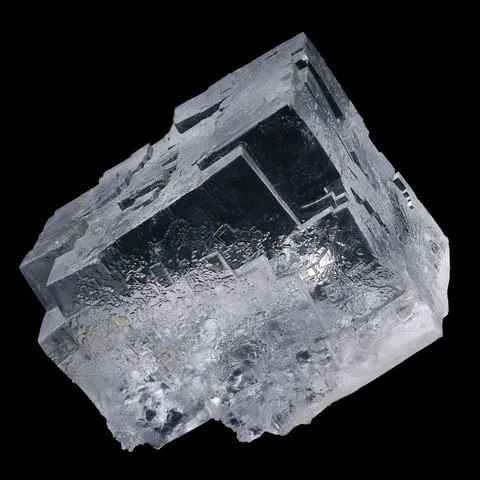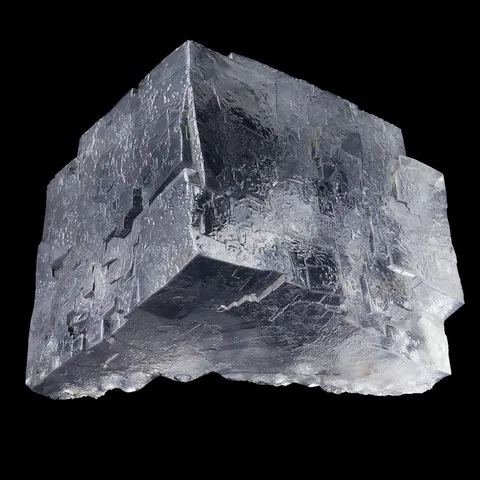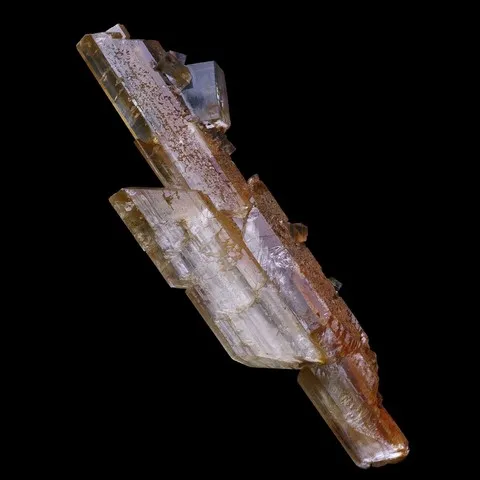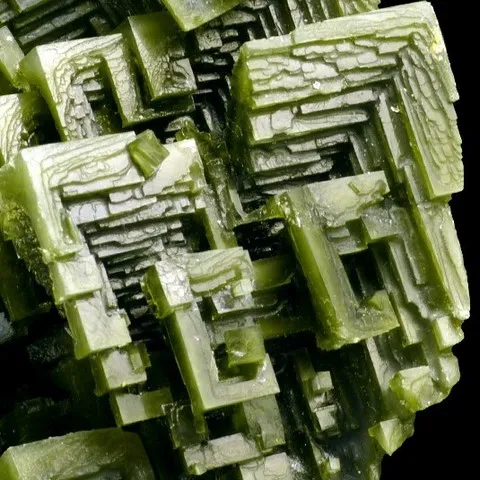HALITE
Class : Halides
Subclass : Chlorides
Crystal system : Cubic
Chemistry : NaCl
Rarity : Common
Halite forms vast evaporitic sedimentary deposits, the salt deposits, which can exceed 1000m in thickness. These deposits result from the evaporation of vast expanses of shallow closed seas, a phenomenon common in geological times. In Western Europe, for example, significant evaporite deposits occurred in Permian-Trias period, during the evaporation of the Zechstein Sea, which covered much of Germany and Poland to Lorraine (France), and to the Miocene, then depositing gypsum from the Paris Basin and potash from Alsace. Halite owes its name to the Greek hals (salt). It is a mineral which is therefore gigantic masses, sometimes offering beautiful crystals and also forming efflorescences in arid regions. Salt is a transparent to translucent mineral, most of the time colorless or faintly colored, it can take on an intense bright blue color. The crystals are usually cubes with smooth faces or stepped, rarely octahedra or dodecahedra. Halite is a top-notch industrial mineral and also the major source of sodium and chlorine, with more than 18,000 direct or derived uses. It is one of the essential components of the food industry, salt has been used for centuries as a food preservative, not to mention its essential role in fertilizers and animal feed. In France all salt consumed for food comes from salt marshes. Salt is also used for snow removal (in France a moderately cold winter consumes about one million tonnes of salt). Salt domes are also used to store certain hazardous materials such as radioactive waste or hydrocarbons.
Halite in the World
Halite in France
Colorless, orange and sometimes blue / violet halite is found on the salt deposit of Mulhouse (Haut-Rhin). The numerous oil prospecting drilling in Limagne (Puy-de-Dôme) have also put forward evaporite deposits rich in halite with the same colors of this sedimentary basin. One of these carrots is exhibited at the Lecoq Museum in Clermont-Fd. Salt sources also corroborate this information, including the famous brackish and bituminous source of Puy de la Poix (three times the salt concentration of seawater).
Twinning and special forms
Fakes and scams
It could to bluish under irradiation, but this treatment is not practiced
Hardness : 2 to 2.5
Density : 2.163
Fracture : Conchoidal
Streak : White
TP : Translucent to transparent
IR : 1.5543
Birefringence : 0
Optical character : None
Pleochroism : None
Fluorescence : Pink, red, orange, green
Solubility : Water
Magnetism : None
Radioactivity : None





